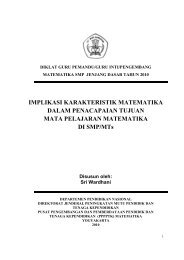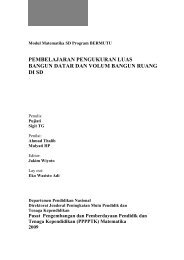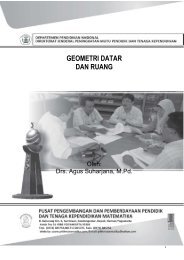25 Biggest Mistakes Teachers Make and How to Avoid Them
25 Biggest Mistakes Teachers Make and How to Avoid Them
25 Biggest Mistakes Teachers Make and How to Avoid Them
Create successful ePaper yourself
Turn your PDF publications into a flip-book with our unique Google optimized e-Paper software.
Teacher Confessions of Worst Treatment of a Child<br />
Underlying Causes <strong>and</strong> Reasons<br />
That Some <strong>Teachers</strong> Mistreat Students<br />
An analysis of the 44 teacher responses of why they did what they did<br />
revealed commonalities in the content of their responses that give ear <strong>to</strong> a<br />
collective voice of frustration that is very obvious. Most of the teachers<br />
reported that they did what they did because they were angry <strong>and</strong>/or frustrated.<br />
In their efforts <strong>to</strong> discipline <strong>and</strong> control their students, some teachers<br />
do <strong>and</strong> say things that traumatize students, creating acute anxiety or stress . . . in<br />
effect, they cause what I refer <strong>to</strong> as academic trauma. I define academic<br />
trauma as a construct or concept that represents the effect of a student’s reaction<br />
<strong>to</strong> aversive academic experiences such as extreme or harsh discipline,<br />
negative teacher–pupil interactions, unfair treatment, poor instruction, physical<br />
or psychological injury, or any other occurrence that may manifest as a<br />
significant emotional event. These aversive experiences typically involve victimization<br />
by a teacher or an administra<strong>to</strong>r. Academic trauma may have<br />
long-term consequences that can have detrimental effects from childhood on<br />
in<strong>to</strong> adulthood. Victims of academic trauma may be psychologically scarred,<br />
meaning, they never seem <strong>to</strong> forget what happened <strong>to</strong> them when they were<br />
young students. Academic trauma appears <strong>to</strong> be a legacy of early educational<br />
practices rooted in Puritan <strong>and</strong> Colonial tradition, the antiquated, abusive<br />
discipline strategies <strong>and</strong> ineffective practices that were characteristic of the<br />
early twentieth century.<br />
Further analysis of the motive probes provided an enlightening revelation;<br />
namely, that the teachers’ offensive acts were most often an outcome of<br />
“emotional snapping.” I believe this “snapping” is one of the main reasons<br />
that teachers did what they did in their worst treatment of a student. I think<br />
the genesis of emotional snapping lies in the teachers’ perceptions of themselves<br />
<strong>and</strong> what Woolfolk (2007) refers <strong>to</strong> as their teacher efficacy or their perception<br />
of their ability, particularly in the context of dealing with student<br />
misbehavior.<br />
After further examination of their responses, I conclude that the participating<br />
teachers were very troubled when their students exhibited strong<br />
opposition, particularly any of the behaviors that I’ll call the 5 D’s of discipline<br />
problems; disrespect, defiance, disruption, disdain, <strong>and</strong> disorder.<br />
Fueled by ingrained beliefs of ultimate teacher power <strong>and</strong> authority, many<br />
teachers become frustrated when they are unable <strong>to</strong> penetrate the wall of<br />
opposition that is often perceived by the teacher when a student or students<br />
engage in any of the 5 D’s of misbehavior. The apparent wall of opposition<br />
often strains the teacher’s emotional resources. The resistance or student misbehavior<br />
generates an unbearable level of frustration <strong>and</strong> the teacher “snaps”<br />
under the pressure. Unfortunately, as a result of their anger, many teachers<br />
step out of character <strong>and</strong> impulsively seek relief from their emotional snap<br />
through vengeful, offensive acts.<br />
In Figure 7.1, I have created a detailed, social interaction model that<br />
depicts the dynamics of teachers’ confessions of their worst treatment of<br />
241





